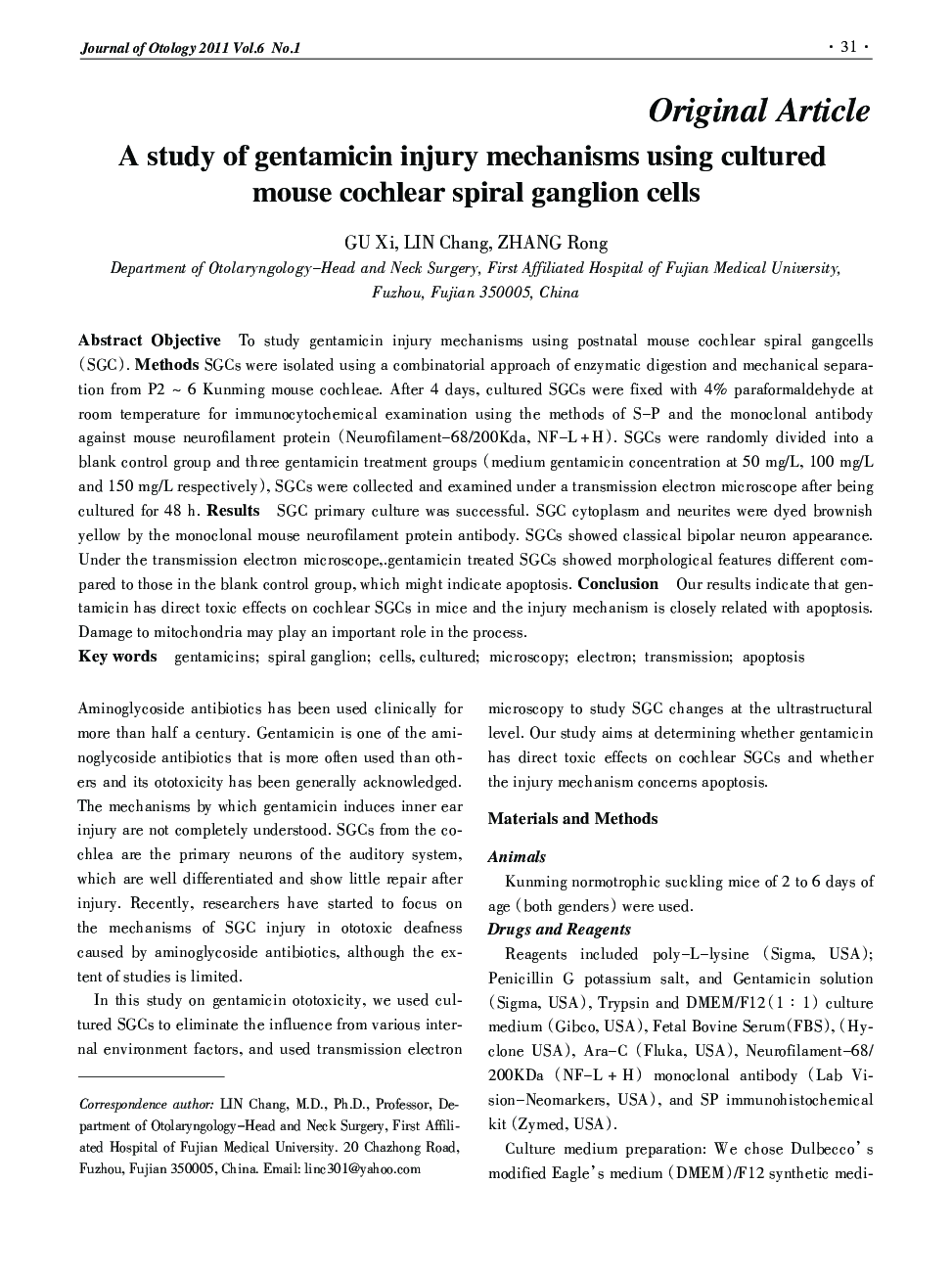| Article ID | Journal | Published Year | Pages | File Type |
|---|---|---|---|---|
| 4116746 | Journal of Otology | 2011 | 5 Pages |
ObjectiveTo study gentamicin injury mechanisms using postnatal mouse cochlear spiral gangcells (SGC).MethodsSGCs were isolated using a combinatorial approach of enzymatic digestion and mechanical separation from P2 ~ 6 Kunming mouse cochleae. After 4 days, cultured SGCs were fixed with 4% paraformaldehyde at room temperature for immunocytochemical examination using the methods of S–P and the monoclonal antibody against mouse neurofilament protein (Neurofilament–68/200Kda, NF–L+H). SGCs were randomly divided into a blank control group and three gentamicin treatment groups (medium gentamicin concentration at 50 mg/L, 100 mg/L and 150 mg/L respectively), SGCs were collected and examined under a transmission electron microscope after being cultured for 48 h.ResultsSGC primary culture was successful. SGC cytoplasm and neurites were dyed brownish yellow by the monoclonal mouse neurofilament protein antibody. SGCs showed classical bipolar neuron appearance. Under the transmission electron microscope,.gentamicin treated SGCs showed morphological features different compared to those in the blank control group, which might indicate apoptosis.ConclusionOur results indicate that gentamicin has direct toxic effects on cochlear SGCs in mice and the injury mechanism is closely related with apoptosis. Damage to mitochondria may play an important role in the process.
